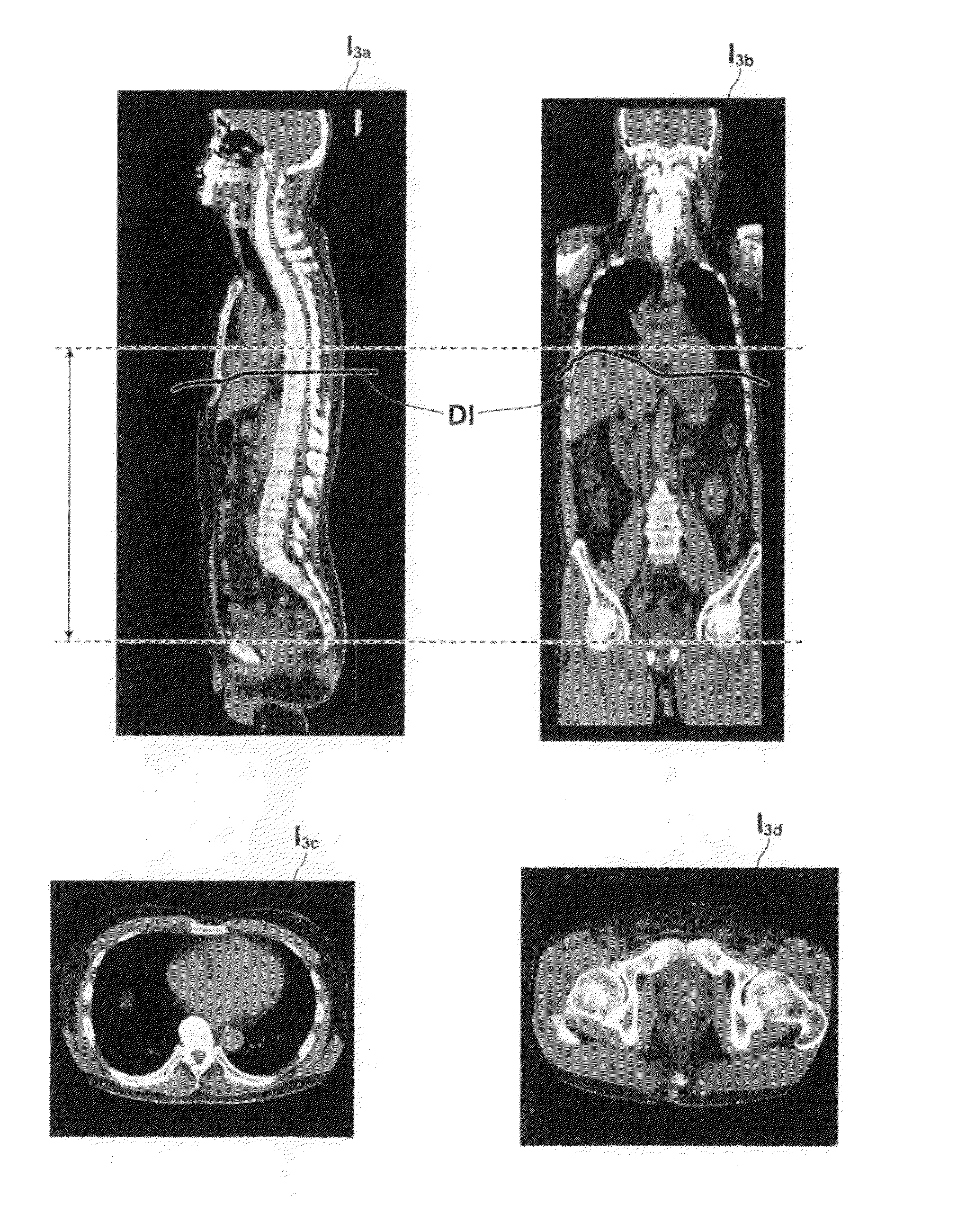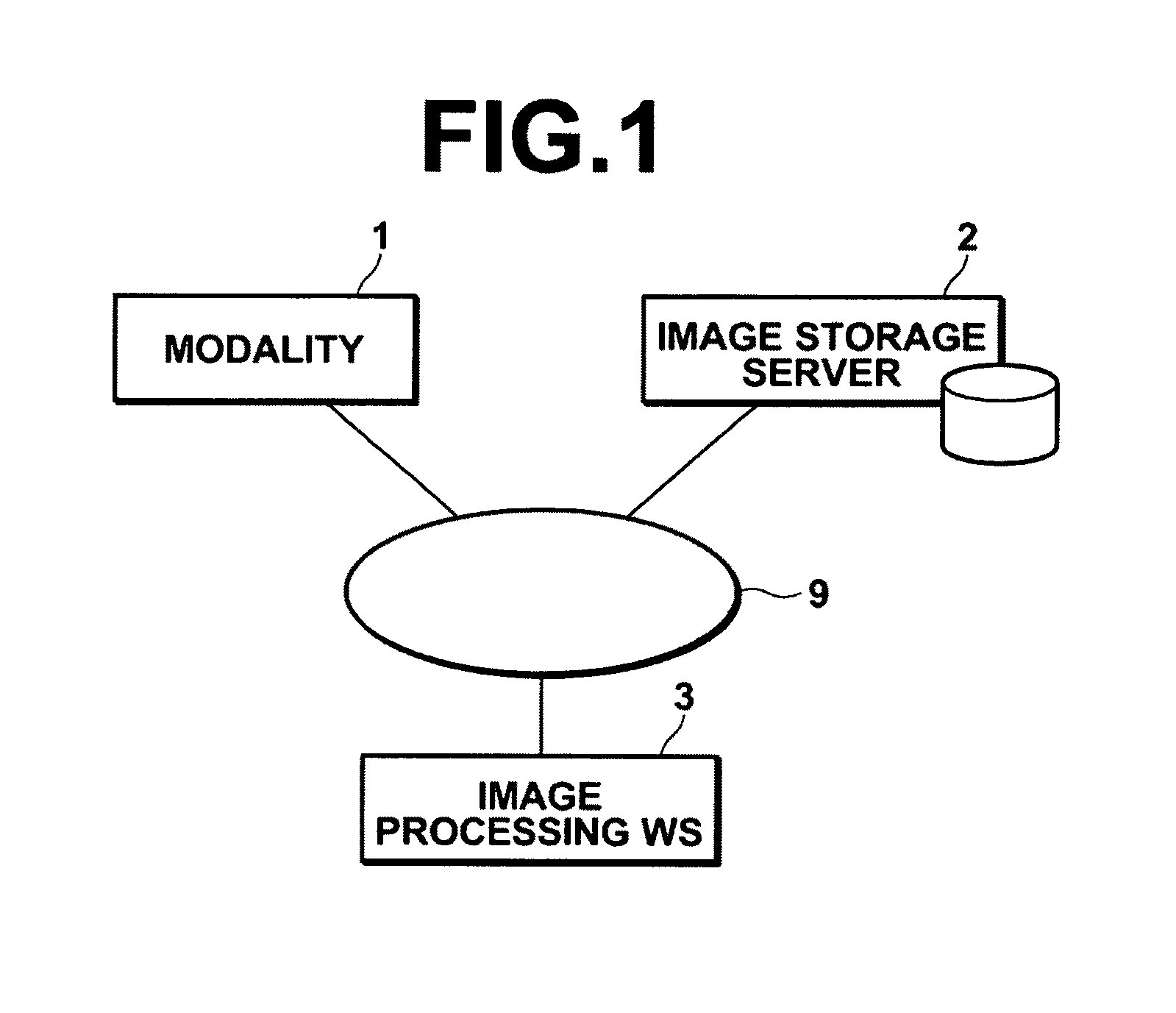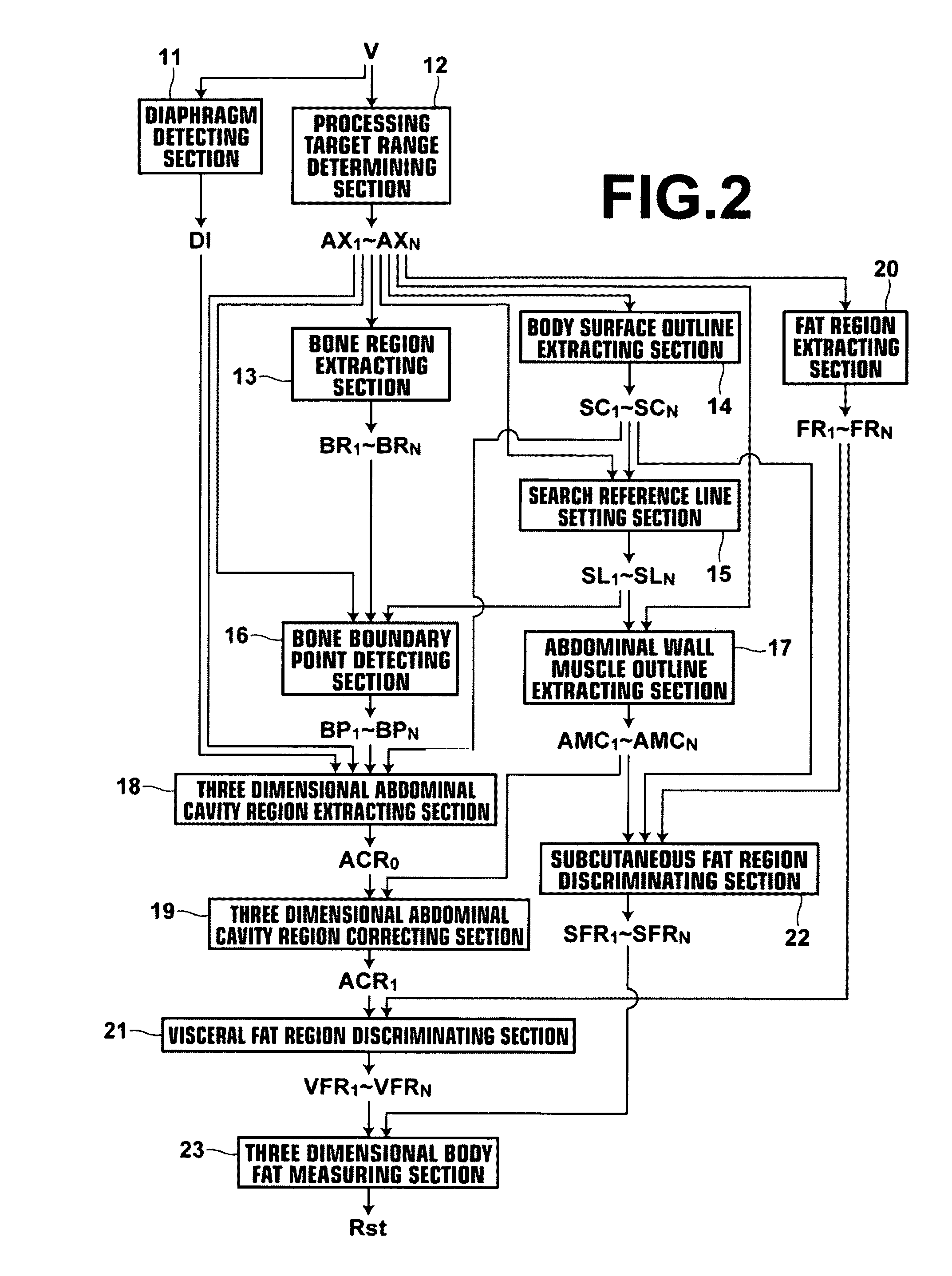Apparatus, method, and program for detecting three dimensional abdominal cavity regions
a three-dimensional image and abdominal cavity technology, applied in the field of three-dimensional image analysis process, can solve the problems of not necessarily the case that accurate measurement can be performed, the assumption of axial tomographic images in the vicinity of the pelvis fails, and the amount of errors to become great, so as to improve the accuracy of fat region discrimination, the effect of improving the extraction accuracy of the abdominal cavity region and improving the estimation accuracy of the curved surfa
- Summary
- Abstract
- Description
- Claims
- Application Information
AI Technical Summary
Benefits of technology
Problems solved by technology
Method used
Image
Examples
Embodiment Construction
[0071]Hereinafter, a three dimensional body fat measuring system in which a three dimensional abdominal cavity region extracting apparatus of an embodiment of the present invention is incorporated will be described with reference to the attached drawings.
[0072]FIG. 1 is a diagram that illustrates the hardware structure of a medical image information display apparatus according to a first embodiment of the present invention. As illustrated in FIG. 1, the system includes: a modality 1; an image storage server 2; and an image processing workstation 3. The modality 1, the image storage server 2, and the image processing workstation 3 are connected via a network 9 such that they can communicate with each other.
[0073]The modality 1 obtains three dimensional medical images (voxel data) V that represent subjects. Specifically, the modality 1 is a CT apparatus, an MRI apparatus, an ultrasound apparatus, or the like. In the present embodiment, the three dimensional images V are constituted by...
PUM
 Login to View More
Login to View More Abstract
Description
Claims
Application Information
 Login to View More
Login to View More - R&D
- Intellectual Property
- Life Sciences
- Materials
- Tech Scout
- Unparalleled Data Quality
- Higher Quality Content
- 60% Fewer Hallucinations
Browse by: Latest US Patents, China's latest patents, Technical Efficacy Thesaurus, Application Domain, Technology Topic, Popular Technical Reports.
© 2025 PatSnap. All rights reserved.Legal|Privacy policy|Modern Slavery Act Transparency Statement|Sitemap|About US| Contact US: help@patsnap.com



